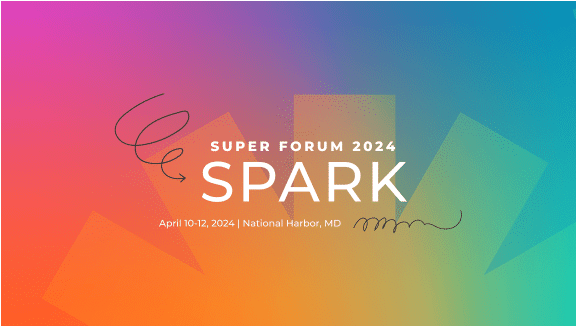
Why a Branded Online Community Beats Just Using Social Media
You know the power of a well-connected, engaged community for your association. But where you host that community can have a big impact on your ability to serve its members.
Where are you building your community? Is it on a platform you control that’s a part of your domain, or do you use one of the many social media sites and apps? Candidly, both have value. But when you assess the benefits of each, having your own branded community helps you build beyond what social media can do – and building a branded community is easier than you might think!
The Difference Between a Branded Community and a Social Community
Social
If you’re on Facebook, you’re probably already a member of a Facebook Group (in other words, a social community). Sites like Reddit, LinkedIn, and Twitter also have ways of grouping people with similar interests or who might be in the same industry.
So, building your association’s online community on a social site lets you meet your audience where they might already be congregating. But your organization doesn’t own Facebook or LinkedIn – you’re leveraging a third party to host your community and thus are yielding much of the control of that community to the rules, practices, and capabilities of that third party.
Branded
By contrast, creating your own dedicated online community allows you to create the space you want. It is a unique online destination hosted and led by your brand. Your brand sets the rules, cultivates the tools and capabilities, and owns the data generated by the community.
Say you’re an association for dental professionals: if you’re hosting your community in a Facebook group, your members may have little to no guarantee that the other people they’re talking to in the group are, in fact, other qualified dental professionals. Participants may, then, feel uncertain about accepting advice from other members or engaging in candid discussion. Hosting an online community of your own, especially one integrated with your AMS, allows you to give your members a place to really connect with each other.
It also affords you new opportunities to monitor and respond to your members. In a Higher Logic Community, for example, you’d have the ability to set automation rules to automatically follow-up with members based on certain behavior or reach out to members who began a thread looking for a particular resource and provide it to them. It’s a much more reliable way to stimulate engagement.
How do I decide which to choose?
The answer to that question, as usual, is “It depends.” It depends on the goals you have for your community.
For many associations, your goal isn’t just to gather as many people as possible in a group and occasionally post messages, hoping they are seen in members’ newsfeeds.
Usually, you’re aiming to provide a place where members can have two-way interactions with your association and other members – where they can ask questions, advance their knowledge and careers, and access the thought leadership and certifications your association and partners provide. If your goals are member-centric and aspirational, you might find social media limiting.
Social Media Communities
Social Media Benefits
Again, that’s not to say the big social media platforms don’t have value.
- They’re free: There is zero barrier for anyone to join the social app or its groups. Several social media platforms, like LinkedIn, do offer paid media tiers. But for the most part, users don’t have to pay.
- They’re easy: Usually, once you register and create a profile, you’re ready to go pretty quickly. And once you’re on the platform, most are intuitive.
- They’re everywhere: Online, on mobile – even on smartwatch apps – social networks are rarely out of a user’s sight (not to mention, users are constantly pinged with notifications).
- Everyone’s already there: There are so many users, you can safely assume a person of interest or target group you’re trying to reach can be found on one of these platforms.
- They offer well-know advertising options: Social media is renowned for its customizable niche-targeted paid media campaign capabilities.
Social Media Drawbacks
- Limited control of how your brand is presented
- No access to member data
- No SEO benefits
- Vulnerability to platform rule changes and fluctuating platform reputation/popularity
- A largely passive, non-engaging audience
- Mostly provides one-way brand-to-member communication
- Lack of control over how content can be presented
- Member data and behavior can be sold by the platform to anyone
- No ability to scale (you don’t control search or organization features)
- Competition for attention (you’re sharing the space with a lot of other brands)
- Limited airtime due to the speed at which users tend to cycle through social feeds
Branded Online Communities
Branded Community Benefits
Compared to social media communities, you face less limitation and can achieve more with your own branded community.
- Two-way interactions: An online destination exclusively for a relevant community inspires more engagement and interaction (with the association and between members).
- Control of content: Whether it’s long-form content, interactive assets, or podcasts, there are no limitations to the kinds of content you can share, and exactly how you want to organize and present it. Members can also weigh in on the kinds of content they want to see and manage their notifications.
- Deep view of the members: You can request, monitor, gather, and analyze member data for a deep understanding of your membership. You can then leverage this data to create highly personalized member experiences.
- Refined moderation: Whether it’s limiting the number of contributions per user within a time frame, moderating based on watch words, or leveraging automation, you can keep conversations inclusive and productive for all members.
- Community Management: you have the option to make your community more secure, with verification through a member SSO/database. You can also set member view permissions and include the option to allow anonymous posting.
- Member experience and gamification: Reward members based on their engagement. Use automation rules to set different experiences, or give badges, for members based on things like length of membership and community activity.
- Networking and mentorship: Match members to mentors, hold community events, and maintain a searchable directory of members.
A branded community can also be a valuable tool for solving association business challenges – a survey of 400 business leaders revealed that communities proved successful in addressing these top 5 concerns:
- Increasing customer engagement
- Improving customer experience
- Raising brand awareness
- Getting meaningful feedback
- Driving and maintaining brand loyalty
And while you may be nervous about the time required to properly start, manage, and maintain a branded community, you might be surprised by how much this can be mitigated with the right technology tools.
Tap Into the Power of Branded Community
As you can see, while social media communities are free and easy, branded communities allow you to better optimize the member experience in ways that pay dividends for the association. You’re getting the ultimate in flexibility and customization, which helps you make the community a true extension of your brand. And you’re getting priceless member data, learning more about your members so you can better meet their needs.
Considering starting (or upgrading) your own branded community? Learn more about Higher Logic Thrive, which is designed to elevate the member experience. There are pre-built community templates and out-of-the-box marketing automation tools available through Higher Logic Thrive that will help you jumpstart member engagement and save staff time.



